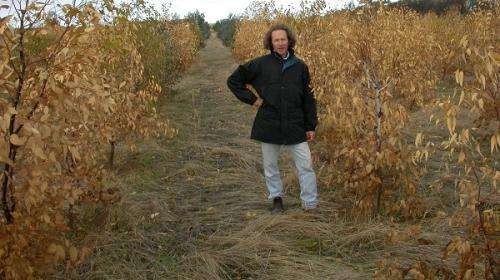Rapid-growth plantations eyed for water management

Utilising rapid-growth tree plantations could support water management in dryland farming systems while producing feedstock for bioenergy, new research contends.
Murdoch University Professor Richard Harper says phase-farming with trees (PFT) combats rising water tables and soil salinisation.
"In dryland systems, widespread replacement of deep-rooted native vegetation with shallow-rooted annual plants for agriculture causes excess water to build up over time," Prof Harper says.
"Annual crops often don't use all rainfall, and as a consequence, water builds up in the soil.
"Salts stored in the soil then rise to the surface, causing problems for agricultural production, water resources and biodiversity."
Prof Harper says a potential solution is using fast-growing, deep-rooting native trees for a short period, and then returning to agriculture. These trees would dry the soil out to depths of several metres.
To test the idea, he and his colleagues conducted a five-year field experiment near Corrigin in the Wheatbelt to see how different species and planting densities might help lower the water table.
Three species (Eucalyptus globulus, Eucalyptus occidentalis and Pinus radiata) were planted at four densities (500, 1000, 2000 and 4000 stems per hectare) and in three landscape locations.
The team found E. occidentalis planted at 4000 stems per hectare was the most effective water-user, extracting 443–771mm more water by four years of age than would normally occur.
Prof Harper says this result could allow for three-to-four-year tree rotations followed by 11–20 years of agriculture.
E. occidentalis also showed the best biomass yield at 4000 stems per hectare on lower slope sites.
Various factors responsible for planting success
Overall, results were highly variable, with drought deaths found to be common in upper slope plots by age three, and at mid-slope plots by age five, suggesting the need for selective planning.
"The marked variation in soil water depletion between different species and with planting density indicates that the amount of soil water depletion can be managed by manipulating these factors," Prof Harper says.
"Carefully matching species to site conditions will be an important component of deploying the phase-farming with trees system."
Prof Harper says the results contrast the belief that biomass production always has negative consequences for agriculture.
He adds that apart from PPT, this large, presently un-utilised source of water could be used by other crops, if their rooting systems could extend to depths of several metres.
Provided by Science Network WA


















